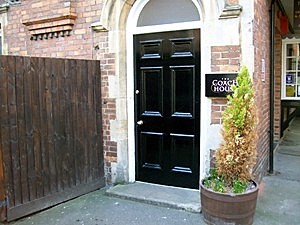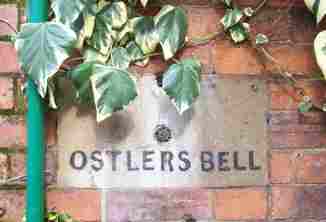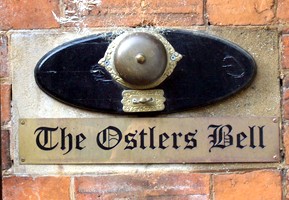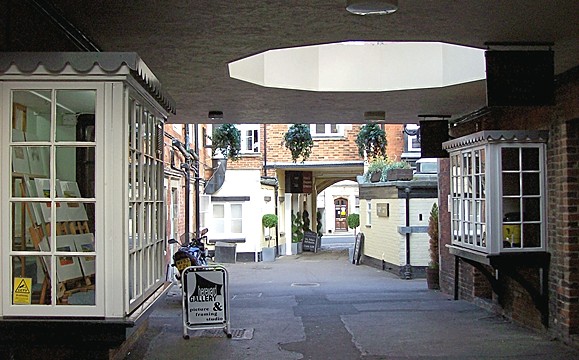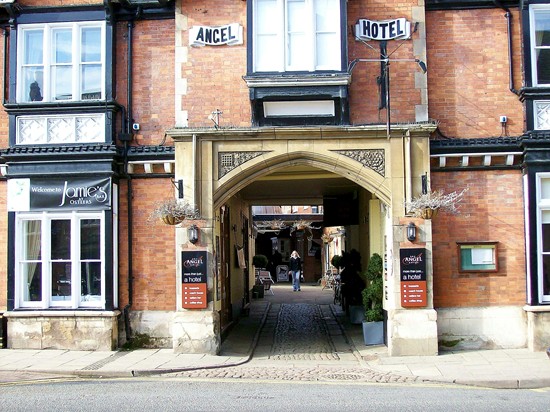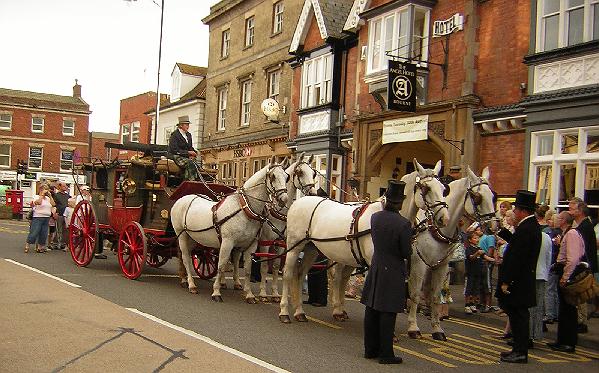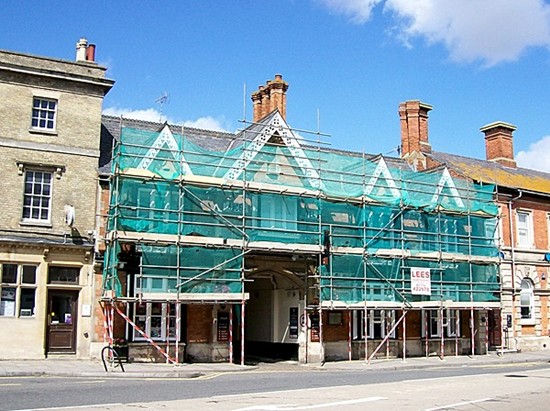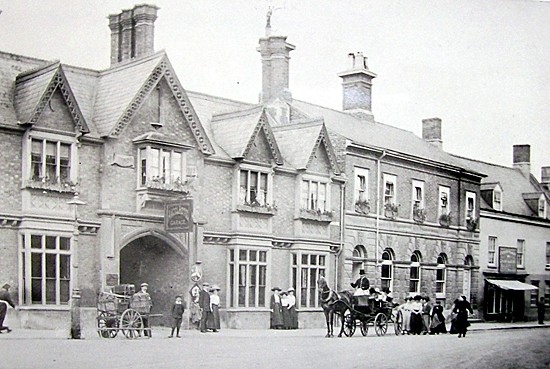|
The Angel Hotel
There has never been a shortage of inns in Bourne, most of them built during the 19th century to cater for a rising population and trade boom although some were already well established when the century began.
The Angel Hotel in the town centre dates from the 18th century and was originally known as the Nag's Head but the name was changed around 1790 to the Angel Inn as it was known when the Duke of Sussex, son of George III, stayed there overnight in October 1825.
It later became the Angel Hotel and is now the oldest surviving hotel for guests in the town as well as being an important posting house during coaching days. The town had the advantage of being on one of the main routes from Lincoln and York to London and a daily coach service passed through Bourne, often making an overnight stop and usually picking up passengers. There was also a mail coach and a wagon service for heavy goods and carriers also operated local services to surrounding towns. By 1857, an omnibus left the Angel Hotel every morning, except Sundays, at 8 am to connect with the railway station at Tallington on the Great Northern line. The livery stables at the rear of the building were eventually incorporated into the main hotel and by 1900 it boasted fifteen bedrooms and a banqueting room that could accommodate 150 people.
During the 19th century, beer sold at the hotel was produced by a small brewery attached to the rear of the premises and on the morning of Sunday 7th August 1892, fire broke out at the premises soon after 7 am. The fire brigade were quickly on the scene and managed to bring the flames under control with the help of the landlord, Mr Arthur Bott and members of the hotel staff, pumping water from a tank at the top of the brewery which was used for beer production. Their prompt action stopped the flames from spreading to the entire block of buildings, including the Masonic rooms and adjoining properties in the Market Place. The fire is believed to have been caused by embers raked out from the brewery's copper boiler the previous evening which fell into a pile of nearby coal and eventually burst into flames.
The courtyard and outbuildings can still be seen together with an ostler's bell and there is a pattern of small gables across the coaching arch while outside on the main road, the town pump was strategically placed to provide for the needs of the coach horses which stopped here. Apart from its function as a hotel, the Angel was also registered as an Excise Office from 1808 onwards where makers of a wide range of goods were required to pay their necessary duties.
The hotel's present appearance dates from 1851-2 when an extensive programme of refurbishment and rebuilding was undertaken. The work took several months and involved demolishing and rebuilding the frontage that we see today in a style which, the Stamford Mercury reported on Friday 6th June 1851, "will add much ornament to the market place".
In 1862, the Assembly Rooms were erected in the courtyard at the rear of the hotel in matching red brick and blue slate by the landlord, Henry Bott and the date and his initials appear on a stone plaque at the front. The new facility was widely used for a wide range of social events, dances and parties, and as the meeting hall for many local organisations, including the Hereward Lodge of Freemasons (No 1232) which was formed there in 1868.
The first major renovation of recent times was completed in the summer of 1972 when the hotel was owned by the brewers Bass Charrington Limited. Old stonework and beams were discovered during the building work which included transforming the old dining room into a lounge with its own bar, replacing the former lounge that was too small and lacked modern service facilities. A new dining room was formed by demolishing internal walls and re-allocating the existing space. The kitchen and toilets were also brought up to modern standards and oil-fired central heating was installed together with emergency lighting and fire alarms. The licensee at this time was Mr David Owen who had been with the company for almost four years.
In the summer of 1985, the long-disused outbuildings and stables at the rear of the hotel were converted into a new shopping centre called the Angel Precinct. Seven shops were included in the arcade with three glazed domes built into the roof to provide light and although the conversion scheme blended with the atmosphere of the old coaching inn, the appearance of these domes did not meet with universal approval.
Then in December 2001, the hotel owners decided to repaint the exterior and replaced the traditional black and white woodwork in the window frames and surrounds with green and cream that many people felt looked quite incongruous. The change of colour was subsequently challenged by South Kesteven District Council because planning permission had not been obtained and the property is a Grade II listed building within the conservation area. The owners were subsequently ordered to restore the original colours and despite some early opposition to the ruling, the repainting was carried out in the spring of 2003 when the original black and white livery was restored.
A major change in the status of the hotel came in 2005 when the ownership changed hands and it was closed down for several months to enable major refurbishment take place at a cost of £500,000. The work included the addition of a new restaurant to seat 90 people, a separate bar, 12 luxury bedrooms and a 120-seater function room, making it the flagship hotel for the company, Franchitti Inns. The new owner was Nick Frankgate, aged 53, who with his wife Brigette, had extensive experience in the hotel and catering trade, but their tenure lasted only 14 months when they got into financial difficulties and in August 2006 the receivers were called in by the beer and beverage company Scottish and Newcastle which was owed money and the couple subsequently left in August to take over a hotel in Surrey. "We have enjoyed our time here but it has not been as successful as we first imagined," said Mr Frankgate.
MTL Management Services took over the hotel until a 20-year lease of the building was sold to pay the debts with an estimated price tag around £150,000 and an interim manager was appointed, Steve Cross, a well known chef who has recently been appearing on television cookery programmes with Jamie Oliver. They were taken over in 2007 by the Italian restaurant chain Fratelli which also had catering businesses in the Peterborough area but this was also short-lived and the hotel closed in January 2009, re-opening two weeks later under the ownership of Helena Hotels. They had acquired the lease from the owners, Meister Property, who gave assurances that the shops in the Angel Precinct would not be affected by the changes and would continue with business as usual.
REVISED APRIL 2015
See also Past landlords of the Angel Hotel Early days on the road
Go to: Main Index Villages Index |
||||||||||||||||||||||||||||||||
